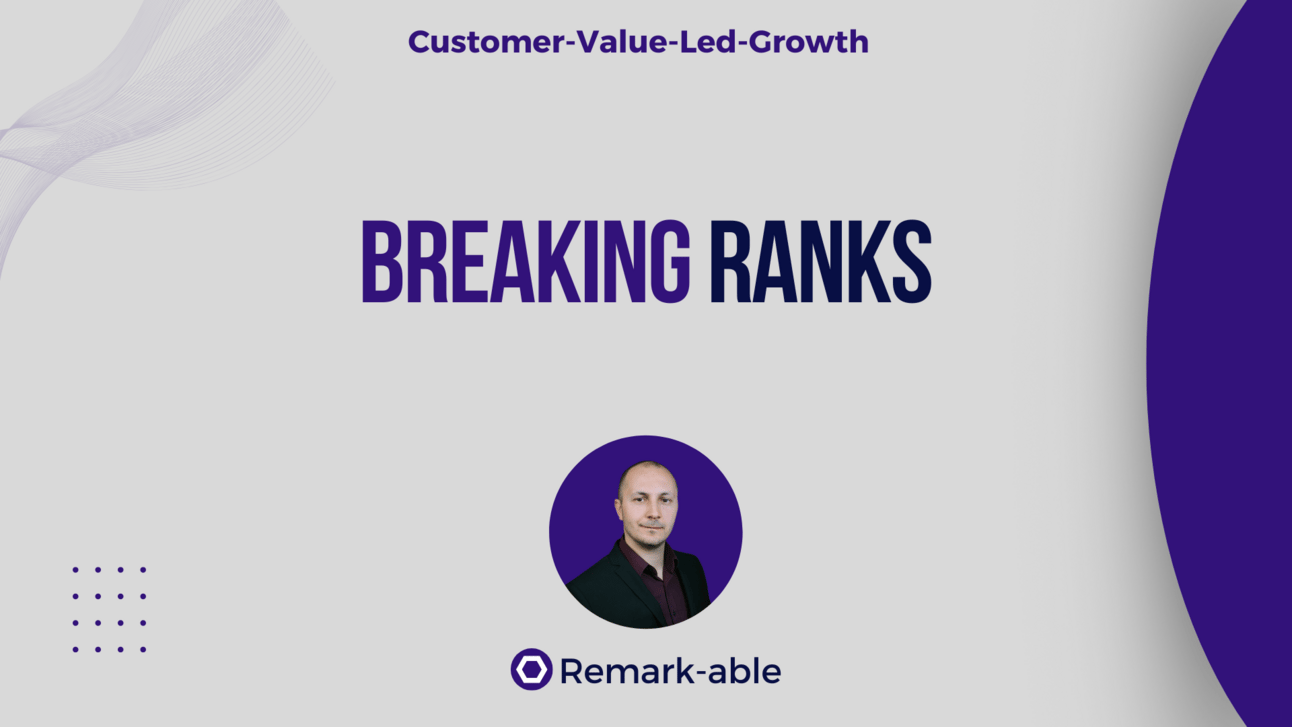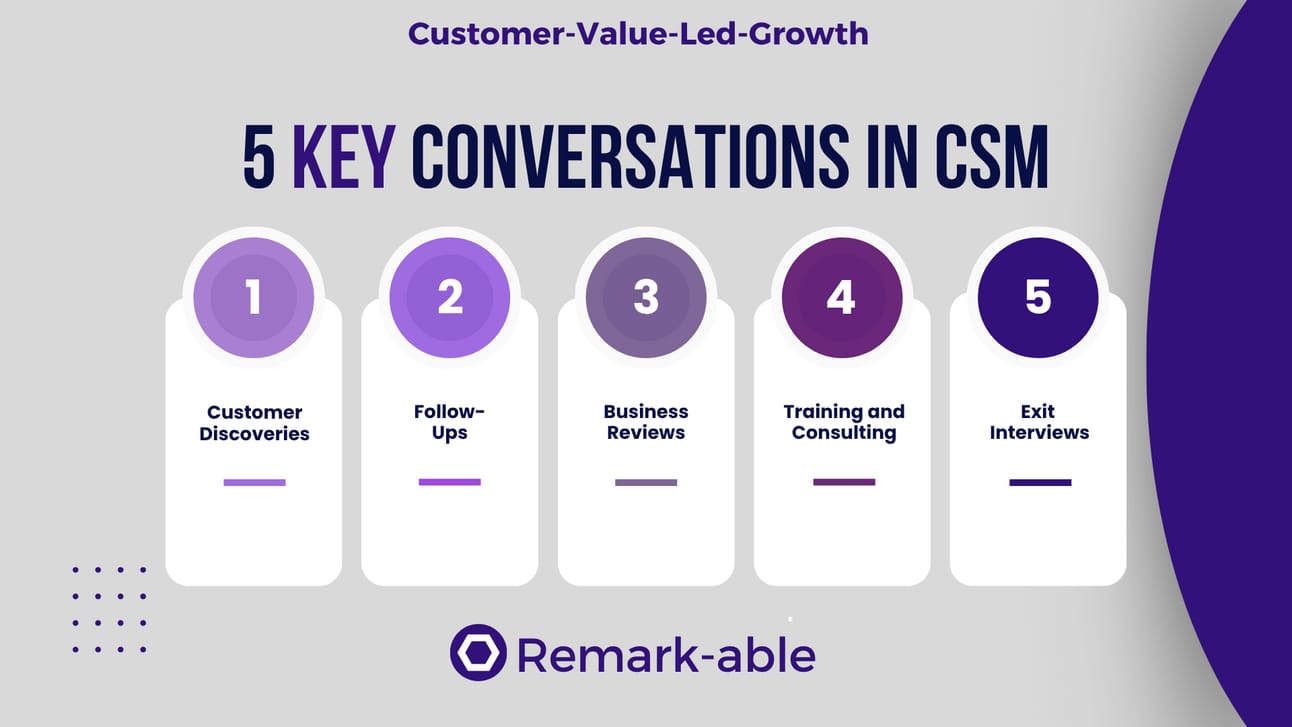
Hi, Markus here. Welcome to a new episode of the Customer-Value-Led-Growth Newsletter.
I share strategies and guides for CSMs and CS leaders to improve their performance and get the recognition and compensation they deserve every week.
Want to excel in CSM? Check out these resources 👇
Plugging the Hole - Churn Guide *RENEWED*
CSM is a prime example of meetings that could have been an Email. It happens all the time.
Meetings are scheduled because
The random playbook says you have to meet once every X days
A superficial so-called success metric has become dangerously low
CSMs think that’s what it means to be proactive
They have no agenda, no goal, and no outcome. In the end, you’ll find yourself conversing about open tickets, discussing the product roadmap, or, worse, engaging in nothing but small talk.
The only thing you’ll accomplish is to waste your customers’ time and drive them away. Until they no longer want to meet with you.
In today’s post, I want to share my 2 cents on the 5 types of meetings you actually need and how to make them worth the investment.

1. Customer Discoveries
Their importance can’t be emphasized enough. CSMs need to stop treating the sales handoff as the holy grail and start viewing it as what it is - a summary of basic customer information.
It’s not enough to create tailored success plans and education, and training programs. All you can do is to squeeze your customers into a one-size-fits-all motion. Creating frustration and resentment.
That’s not what professional Customer Success Management looks like. Start your customer engagements with your very own customer discoveries. Where you are not asking the same questions as sales, but where you are going deeper based on the handoff.
“When you were talking to X [Account Executive], you mentioned that Y [Problem] is causing you the most pain. Do you mind walking me through Z [Relevant Process] to help me understand how you are currently doing it?
After completing your discovery, you should have a full understanding of
The goals customers want to accomplish and how they measure success
The problems they need to solve to get there
The skill and knowledge gaps that need to be closed for it
Note: If your colleagues from sales can determine all those things on their own, you have my blessing to skip your initial discovery. In my experience, they don’t have the capabilities to determine 2 and 3.
2. Follow-ups
Do you know what your customers do when you are not in the room? You can have an outstanding customer education and training program. And yet, it still does not mean that your customers were successful in implementing their learnings.
Follow-ups with your customers ensure they are progressing as planned. Contrary to check-ins, they don’t
happen at random points in time
have random triggers
lack of an agenda
Instead, they are scheduled at specific points in the journey with a clearly defined outcome. A simple example would be 2 weeks after customers completed your team training program.
Take a look at what customers have done so far to evaluate their progress in terms of skill growth and performance. If they are not where they are supposed to be, you find out instantly.
Allowing you to fix the issue almost in real time. Before things go south and customers become a churn risk.
3. Business Reviews
They have gotten a bad rep among customers. Not because they are bad by design, but because of how poorly they are typically run. One-sided monologues over 50 slides about the stuff the vendor cares about.
If I were a customer, I would not want to attend either. But guess what - that’s not how they have to be. You can break ranks and do something truly radical, turning QBRs into conversations about what customers care about.
Here’s how that works in a nutshell:
Create a small deck (5 to max 10 slides) that serves as a conversation starter. A conversation about your customers’ results based on the success metrics that have been defined in the beginning.
Dive deeper into the results and discuss what worked, what did not, and why. Identify unexpected bottlenecks that keep your customers from (faster) progress. This is what valuable feedback looks like, by the way.
Derive measures from the analysis, like changes to the success plan and additional inputs customers require (more training, more touchpoints, etc.)
If you are following this structure, your preparation efforts pay off, and your customers will highly appreciate your QBRs instead of dodging them.
If you also share a summary of the QBR in the aftermath, you might even draw the interest of higher-level stakeholders to join in the future.
4. Training and Consulting
In a perfect world, all that customers would require are guides, tutorials, and on-demand webinars. Infinitely scalable so that it does not matter whether you have 100 or 100k customers.
Aided by AI that helps them find what they need at lightspeed. But there’s a reason why being strategic is a thing in CSM. Some customer problems are simply too complex and can’t be solved in a 1:n fashion.
Naturally, that comes into play when you are working with enterprise customers, where you are facing high complexity by design. And in general, scalable inputs become less effective with growing customer results.
At some point, it simply requires tailored inputs to unlock further growth. However, training and consulting sessions are not valuable by design. There are 3 requirements you need to meet
Understanding your customers’ problems and the journey they have ahead (see Discovery)
Knowing how your customers’ business works with its internal dependencies
Possessing industry knowledge that surpasses your customers’ skills and knowledge
To put things simply, your 1:1 and private team sessions need to move your customers one step closer towards their desired outcomes. And it must not repeat the inputs that customers could consume all on their own.
5. Exit Interviews
They can be very painful, but they are incredibly valuable. If you don’t understand why your customers are leaving, you are doomed to repeat the same mistakes over and over.
Most companies rely on superficial churn surveys - a big mistake.
All you will get are superficial answers, and that’s only if customers are willing to participate. Which is questionable considering the overall survey fatigue. Old-fashioned 1-1 conversations might not scale, but you get real insights.
Customers don’t churn because the product is too expensive. Which is absolutely garbage because they knew the price before they purchased it. What they are really saying is that they feel like they are paying too much for what they get in return.
You need to find out why, and I’ve never seen it come to light via a survey. Instead, you need to have an open conversation that allows you to ask follow-up questions until you understand where and why things went south.
A simple yet effective approach to guide the conversation is the 5-Why framework. As the name implies, you literally ask 5 times why customers are leaving, going deeper with every answer you get until you get at the bottom.
Note: Please don’t turn your exit interviews into garbage by asking “why” like a robot. Just engage in a natural conversation where you ask your customers to tell you to share more details.
